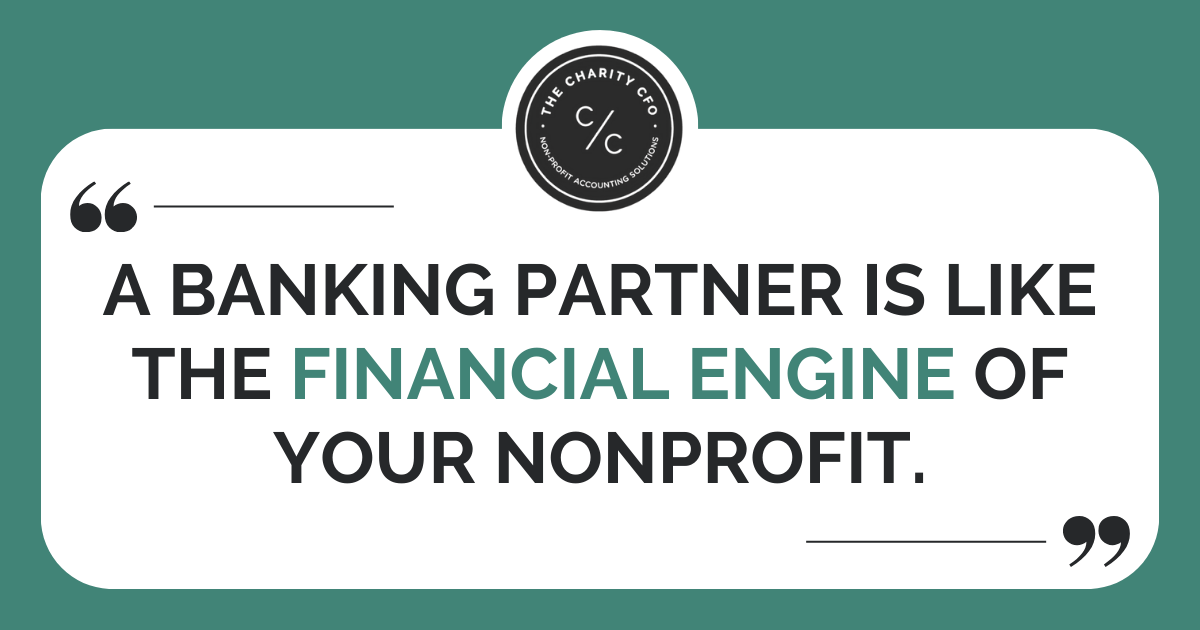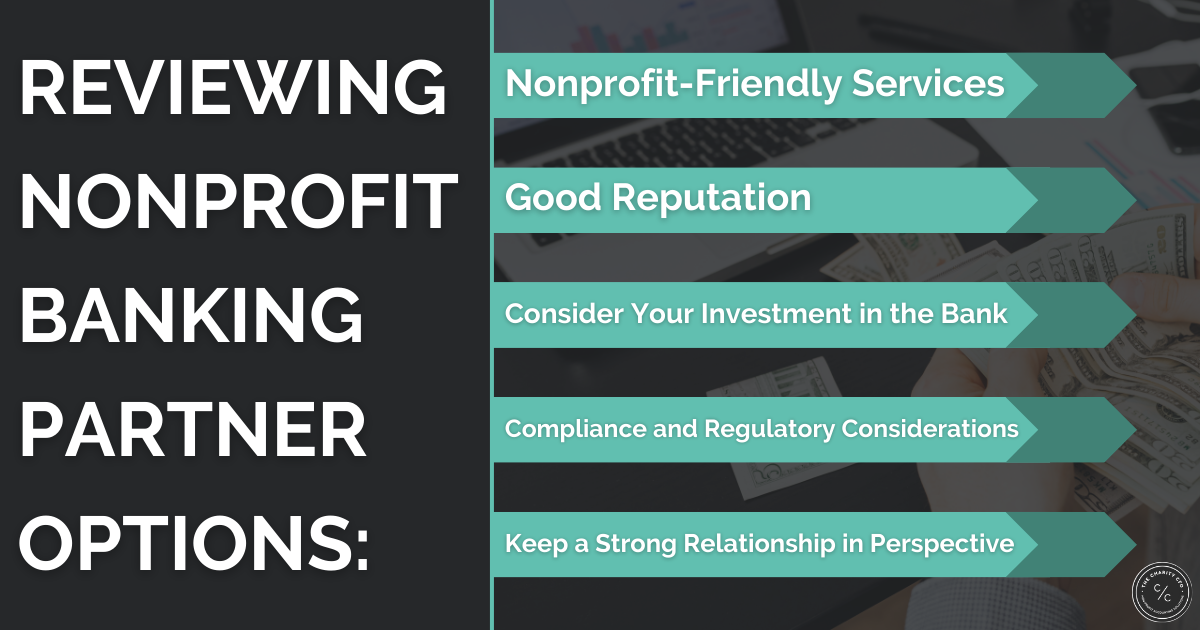It may not seem like a significant aspect of your organization’s financial situation, but picking the right nonprofit banking partner is one of the most vital decisions leaders can make.
While many banks seem to have many commonalities, the differences can make a massive impact on the financial management and sustainability of nonprofits.
Read on as we break down why this decision is so important and explore how to size up potential bank choices.
Determining Your Nonprofit Banking Needs
Before you can figure out which bank is right for you, it’s vital to take the time to assess your true needs, wants, and must-avoids. This should be a collaborative process between:
- Organizational leaders
- Financial employees or board members
- Outside accountants or advisers
- Other important stakeholders
Look at your financial operations and determine the types of accounts and services that any banking partner will need to provide. Don’t just consider your needs now – think about your potential long-term goals and what would be required to operate comfortably. After all, switching banks can require a lot of time and energy, and it’s worth spending the extra effort to find the perfect partner for the long run.
Reviewing Nonprofit Banking Partner Options
It can be a bit overwhelming trying to sort through the extensive information and offerings of each potential nonprofit banking partner. Organization leaders can simplify it all by focusing on these key factors.
Nonprofit-Friendly Services
As you know, nonprofits have unique needs compared to for-profit companies or individuals, and some banks are far better than others when offering special services or catering their current ones toward nonprofits and charities.
One of the biggest is donation processing, a fundamental need for nearly any organization. Consider the other merchant services offered as well, which can range from online or mobile payment gateways to integration into fundraising or financial software you use. Many banking partners also offer payroll solutions that can help eliminate the need for outside processors or services, saving organizations time and hassle.
Good Reputation
There’s no better way to find out what working with a bank is like than to talk with one of its current clients. Use your network throughout the nonprofit community to get some firsthand thoughts on various banks. They may bring up previously unknown benefits or problems you may not have expected.
It can even be helpful to draw on the personal experiences of employees and others in your circle who may have valuable insights about customer service, availability, and more.
Consider Your Investment in the Bank
Unfortunately, working with a high-quality nonprofit banking partner doesn’t come for free. And it isn’t always easy to determine exactly how much using their services will cost you, as many charge different fees, rates, and other expenses. Carefully review these charges, making efforts to create the most apples-to-apples comparison possible.
Meanwhile, as overall interest rates have risen, the amount earned by cash sitting in various accounts has become more significant. While it may not be a huge sum, the differences in interest income can be important for nonprofits always trying to make the most of their dollars. Remember to carefully look over account terms for both financial and non-financial things of note.
Compliance and Regulatory Considerations
Working with nonprofits comes with specific regulations and compliance requirements different from business or personal banking. These can be complex, which is why it’s crucial to find a partner that has experience with them.
At a minimum, every partner should have a firm understanding of and respect for how important it is that your organization maintain its nonprofit tax-exempt status.
Nonprofit leaders also need to address any legal or compliance concerns well in advance of selecting a partner. As with many financial and legal issues, it’s far easier to avoid the problems from the start than deal with them later.
Keep a Strong Relationship in Perspective
There are few things more vital to the success of a nonprofit than a good financial partner, so leaders should take the time and effort to maintain a strong partnership with their chosen bank.
Ensure there are always clear communication channels between nonprofit leaders, financial staff, and bank representatives, allowing all sides to make the most of opportunities and quickly deal with issues.
By developing these relationships, nonprofits can leverage the bank’s resources and expertise to improve their financial management, a benefit that can pay huge dividends over time.
Selecting the Right Nonprofit Banking Partner is Essential
A banking partner is like the financial engine of your nonprofit. Picking the right one and maintaining it in tip-top shape is one of the best ways to put any organization in a position for growth and expanding its impact. But we understand that the choice can be complicated.
That’s why The Charity CFO is here to help, with expert guidance from our financial professionals, who know the ins and outs of the nonprofit banking world. Reach out to us today to learn more and get started.

Do You Struggle to Make Sense of Your Financial Statements?
Get our FREE GUIDE to nonprofit financial reports, featuring illustrations, annotations, and insights to help you better understand your organization's finances.
Get the free guide!



0 Comments